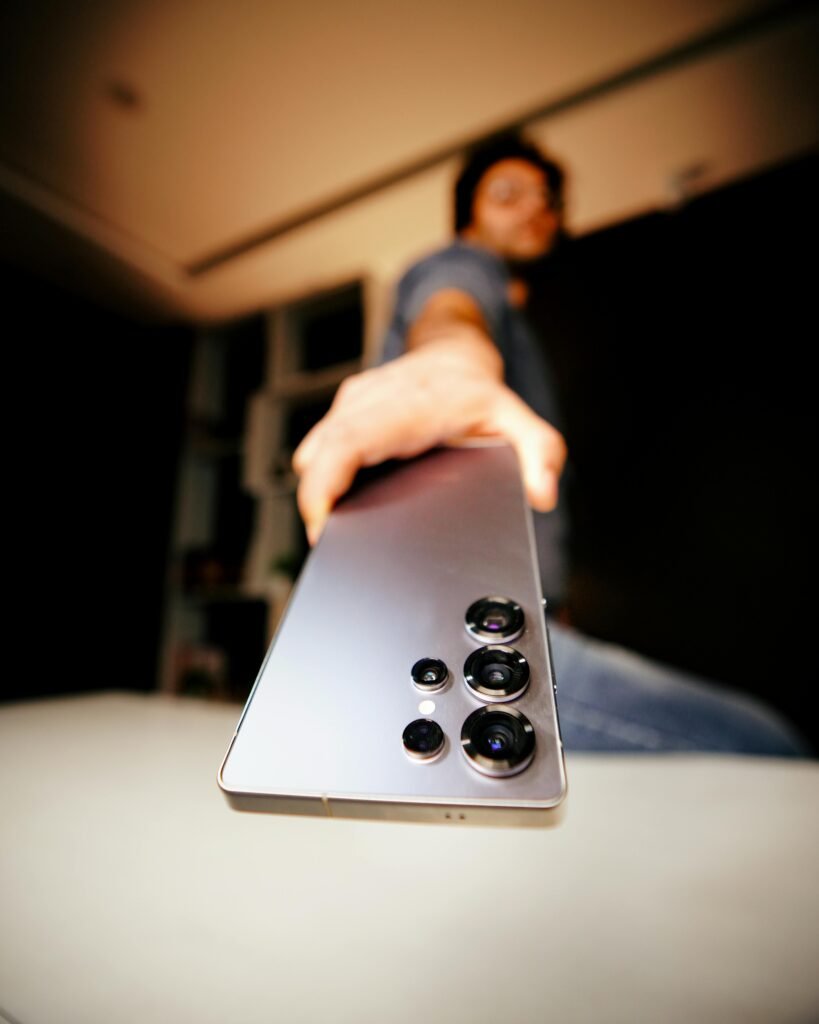
Introduction to Mobile Phones
Mobile phones, once a luxurious novelty, have evolved into an essential communication tool in modern society. Originally designed to enable voice communication on the go, these devices have transformed dramatically over the decades, extending their functionalities far beyond simple telephony. Today, mobile phones serve as multifunctional devices integrating communication, entertainment, and information access, profoundly impacting how we interact with one another and engage with the world around us.
The primary purpose of mobile phones is to facilitate communication, allowing users to connect with others virtually anytime and anywhere. This capability has redefined social interaction, enabling instant communication through voice calls, text messages, and even video chats. As mobile technology advanced, the introduction of the internet on these devices surged, allowing users to access emails, social media, and various applications that enhance connectivity and accessibility.
Moreover, mobile phones have integrated numerous functionalities that cater to the diverse needs of users. Features such as high-resolution cameras, GPS navigation, and access to a plethora of applications have made them indispensable in daily life. Businesses leverage mobile technology for operations, marketing, and customer engagement, while individuals use their phones to manage schedules, banking, and health monitoring. This multidimensional use illustrates how mobile phones have not only streamlined communication but also revolutionized various aspects of life.
In this rapidly changing digital age, the significance of mobile phones cannot be overstated. They embody the convergence of technology and communication, highlighting the shift towards a more interconnected and immediate world. Consequently, an exploration of the invention and creative evolution of mobile phones reveals essential insights into societal changes and technological advancements that have shaped contemporary life.
The Concept of Mobile Communication
The idea of mobile communication predates the actual invention of mobile phones, rooted deeply in the human need for connection beyond geographical limitations. As societies evolved, the demand for communication surged, necessitating portable methods that would allow individuals to connect from different locations without being tethered to stationary infrastructure. This necessity became more pressing as the world expanded, and with it, the complexities of social and economic interactions increased.
Historically, various means of communication were utilized, from smoke signals to carrier pigeons, but as technology advanced, the limitations of these methods became apparent. The development of radio waves in the late 19th century marked a pivotal moment in the progression towards mobile communication. Early inventors and theorists began to explore the potential of radio technology for transmitting voice signals over distances without the need for physical connections. This exploration laid the groundwork for future advancements in telecommunications.
Moreover, the introduction of concepts such as frequency modulation and time-division multiplexing in the mid-20th century further expanded the possibilities of wireless communication. These foundational ideas formed the core principles behind digital mobile communication, allowing multiple signals to occupy the same channel and enabling users to communicate without interference—a significant enhancement over previous technologies.
By overcoming geographical barriers, the early theorists of mobile communication envisioned a world where people could stay connected irrespective of distance. This vision ultimately drove the necessity for portable communication devices, which culminated in the evolution of mobile phones. Thus, the concepts and theories established prior to the actual development of mobile technology were crucial, setting the stage for a revolutionary change in how people communicate and interact globally.
Key Inventors and Innovators
The evolution of mobile phones stands on the shoulders of several key inventors and innovators whose contributions have significantly shaped mobile technology. One of the most notable figures is Martin Cooper, often referred to as the father of the mobile phone. In 1973, Cooper made history by placing the first-ever mobile call on a handheld device while working for Motorola. His groundbreaking work paved the way for subsequent advancements in mobile communication, and he envisioned a world where people could communicate freely without being tethered to a fixed line.
Another influential figure is John F. Mitchell, also from Motorola, who played a crucial role in the development of the first commercially available mobile phone in 1983, the Motorola DynaTAC 8000X. This device was a radical innovation that revolutionized communication, highlighting the potential for mobile technology in everyday life. Mitchell’s engineering expertise helped address the practical challenges of creating a portable telephone, leading to the establishment of a new industry.
Gottlieb Daimler also contributed to the mobile revolution with his invention of the first gasoline engine. Although not directly related to mobile phones, this invention laid the groundwork for mobile technology, demonstrating the interconnectedness of various innovations throughout history. As wireless communication grew, other innovators like Nokia and Apple emerged, transforming the industry with groundbreaking devices that pushed the boundaries of what mobile technology could achieve.
The significance of these inventors cannot be overstated; their work has not only driven the advancement of mobile phones but also reshaped society’s approach to communication. As mobile phones continue to evolve, the foundations laid by these pioneers remain integral to understanding the development of mobile technology today.
The First Mobile Phone: A Revolutionary Breakthrough
In 1983, a groundbreaking milestone in telecommunications was achieved with the launch of the Motorola DynaTAC 8000X. This was not merely a new gadget but a pivotal moment in the evolution of mobile phones. The DynaTAC 8000X, often hailed as the first commercially available handheld mobile phone, revolutionized the way people communicated on the go. Its introduction marked the beginning of a new era where connectivity could extend beyond the confines of a fixed landline.
The specifications of the DynaTAC 8000X were considered groundbreaking for its time. The device featured a substantial weight of almost two and a half pounds and measured approximately 10 inches in length, making it a considerable challenge for users seeking portability. Despite its size, it boasted a talk time of about 30 minutes and took roughly ten hours to charge fully. This hefty design and limited battery life may seem archaic by today’s standards, yet it provided users with unprecedented access to mobile communication, a concept that had previously been confined to vehicles through car phones.
The introduction of the DynaTAC 8000X was fueled by the increasing demand for more accessible and flexible communication methods. It opened the door to a wide array of possibilities, inspiring future developments in mobile technology. Its launch set the groundwork for the mass adoption of mobile phones, leading to continuous innovations in design, functionality, and communication capabilities. In essence, the DynaTAC 8000X served as a catalyst that not only changed consumer expectations but also laid the foundation for the modern mobile devices we rely on today.
Technological Advancements in Mobile Phones
The journey of mobile phones has been marked by a series of significant technological advancements that have transformed these devices from simple communication tools to multifunctional smartphones. This evolution began with the first mobile phone, which was bulky and limited in functionality. However, with continued innovation, the design and capabilities of mobile phones underwent radical changes.
One of the most notable shifts in mobile technology was the transition from large, heavy devices to sleek and lightweight smartphones. Early models featured physical keypads and monochrome screens, which were later upgraded to larger, full-color displays. The introduction of touch screen technology revolutionized interfacing, allowing users to interact with their devices in a more intuitive manner. The rise of capacitive touch screens enhanced user experience by making it possible to swipe, pinch, and zoom, facilitating more sophisticated applications.
Functionality also expanded dramatically with the incorporation of advanced operating systems. The launch of platforms like iOS and Android allowed third-party developers to create a vast ecosystem of applications, tailoring user experiences to their personal needs. Today, users can access a multitude of applications for productivity, entertainment, and social interaction, all housed within a single device. The increased processing power and memory capacities of modern smartphones have further solidified their roles as essential everyday tools.
Connectivity technology has also evolved significantly. The advancement from 2G networks to today’s robust 5G infrastructure has transformed mobile internet usage, enabling faster downloads, smoother streaming, and more reliable connections overall. This leap in mobile connectivity has paved the way for the Internet of Things (IoT) and smart technology integrations, making mobile phones pivotal in daily life. As we reflect on these advancements, it becomes clear that the evolution of mobile phones is a testament to human ingenuity, marking profound changes in communication, lifestyle, and technology itself.
Impact on Society and Communication
The advent of mobile phones has revolutionized the way individuals and businesses communicate, bridging geographical gaps and fostering real-time interactions. This transformation in communication has cultivated a culture that thrives on immediacy and accessibility, where exchanges occur instantaneously, regardless of the distance between parties. The integration of mobile technology has facilitated personal connections, allowing individuals to maintain relationships through voice calls, text messaging, and social media apps, all of which have become ubiquitous in daily life.
In the business realm, mobile phones have significantly improved communication efficiency and enabled the rise of the remote work culture. Employees can now engage with colleagues and clients instantly, enhancing collaboration and reducing response times. This surge in connectivity has also led to the advent of mobile business solutions, such as mobile banking and e-commerce, enabling consumers to conduct transactions on-the-go, which has further transformed traditional business models.
However, the impact of mobile technology extends beyond these conveniences. The reliance on mobile phones has given rise to several societal challenges, notably concerns regarding addiction and privacy. The immersive nature of mobile applications and social media platforms has resulted in increased screen time, with many users struggling to strike a healthy balance between virtual interactions and real-life connections. This phenomena raises questions about the depth and quality of relationships formed through digital means, prompting discussions about the implications for mental health.
Moreover, privacy issues have become paramount as personal data is often shared unknowingly through mobile devices. The potential for misuse of information raises critical concerns about individual privacy rights and the need for better regulatory frameworks to protect users. As mobile technology continues to evolve, it is essential for society to address these challenges while maximizing the benefits that mobile phones provide in enhancing communication and social interactions.
Current Trends in Mobile Technology
The mobile phone industry is undergoing significant transformations driven by various technological advancements. One of the most prominent trends currently shaping this industry is the rollout of 5G technology. This next-generation mobile network promises higher speeds, lower latency, and improved connectivity, allowing for seamless streaming, gaming, and data transmission. As 5G networks become increasingly accessible, mobile phone manufacturers are prioritizing the development of devices that can fully utilize these enhanced capabilities, effectively enhancing user experience.
Another critical trend is the integration of artificial intelligence (AI) into mobile devices. AI technology is being embedded in smartphones to improve user interface, enhance photography capabilities, and optimize device performance. For instance, AI-driven features such as voice recognition and personalized smartphone setups provide users with a tailored experience, making the devices smarter and more intuitive. The incorporation of AI also extends to security measures, where biometric authentication methods, such as facial recognition and fingerprint scanning, offer a higher level of security for users.
Moreover, the rise of smart devices is influencing mobile technology trends as well. The emergence of the Internet of Things (IoT) has led to a surge in interconnected devices that communicate with one another, broadening the scope of mobile phone applications. Smartphones are now at the center of managing smart homes, wearable devices, and other connected gadgets, enabling users to control various aspects of their daily lives through a single device. This trend not only showcases the versatility of mobile phones but also highlights their pivotal role in emerging technologies.
In essence, current trends in mobile technology, including the implementation of 5G, AI integration, and the development of smart device ecosystems, are revolutionizing the mobile phone market. These advancements forge a path towards a future where communication is faster, smarter, and more interconnected.
The Future of Mobile Phones
The trajectory of mobile phones has been marked by rapid advancements, and as we look to the future, several emerging technologies promise to redefine our relationship with these devices. Among the most exciting developments are foldable screens, which offer the potential for more compact designs without sacrificing screen real estate. This innovation is expected to lead to a new category of mobile devices that blend the functionality of smartphones with tablets, thus enhancing user experience and versatility.
In addition to foldable screens, augmented reality (AR) technology is poised to play a significant role in the evolution of mobile phones. As AR applications become more sophisticated and integrated into daily life, mobile devices may serve as essential tools for immersive experiences. From navigation services that overlay information onto the physical world to applications for education and training that simulate real-world scenarios, the potential applications are vast. Such advancements would not only enhance the utility of mobile phones but could also reshape how we interact with our environment and each other.
Moreover, the integration of artificial intelligence (AI) into mobile devices is anticipated to foster more personalized and intuitive user experiences. Future mobile phones may feature smarter virtual assistants capable of learning from user behaviors, thereby streamlining tasks and offering customized recommendations. The relentless pursuit of enhanced connectivity and data security will likely give rise to smartphones equipped with advanced biometric authentication methods, ensuring that user privacy is prioritized.
As we project into this future, it is evident that mobile phones will continue to evolve, incorporating technologies that will enhance our daily lives. The next generation of mobile devices holds the promise of redefining communication, entertainment, and productivity, cementing their status as indispensable tools in an increasingly digital world.
Conclusion: The Journey of Mobile Phones
The evolution of mobile phones has been a remarkable journey, transformative in both technology and societal interaction. Beginning in the 1970s with the introduction of the first handheld devices, mobile phones have undergone substantial advancements, progressing from bulky, analog systems into today’s sleek, multifunctional smart devices. Early innovations laid the groundwork for a wave of creative enhancements, including the development of text messaging, internet access, and applications that have reshaped how we connect with one another.
The significant milestones along this journey encapsulate not only technological strides but also shifts in consumer behavior and expectations. In the early days, mobile phones primarily served as tools for voice communication. However, the gradual integration of features such as cameras, GPS, and expanded storage capacities revolutionized their usage. As mobile technology advanced, smartphones emerged, combining the capabilities of a phone with that of a computer, thereby enabling users to engage in a diverse array of activities ranging from online gaming to social media and beyond.
Moreover, the advent of mobile phones has had profound implications on global communication patterns and social dynamics. The ability to communicate instantly across great distances has altered interpersonal relationships and facilitated professional interactions in unprecedented ways. The reach and accessibility of mobile technology continue to bridge gaps in communication, particularly in developing regions where traditional communication infrastructure may be lacking.
In conclusion, the journey of mobile phones is not merely a narrative of technological advancement but a reflection of how these devices have become integral to our daily lives and societal structure. As we look to the future, the landscape of mobile technology promises ongoing innovation, continually redefining the boundaries of possibility in communication, connectivity, and convenience.




